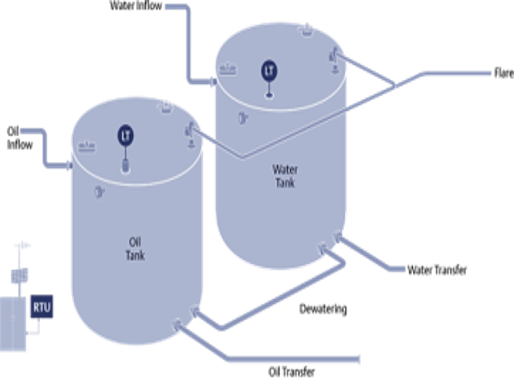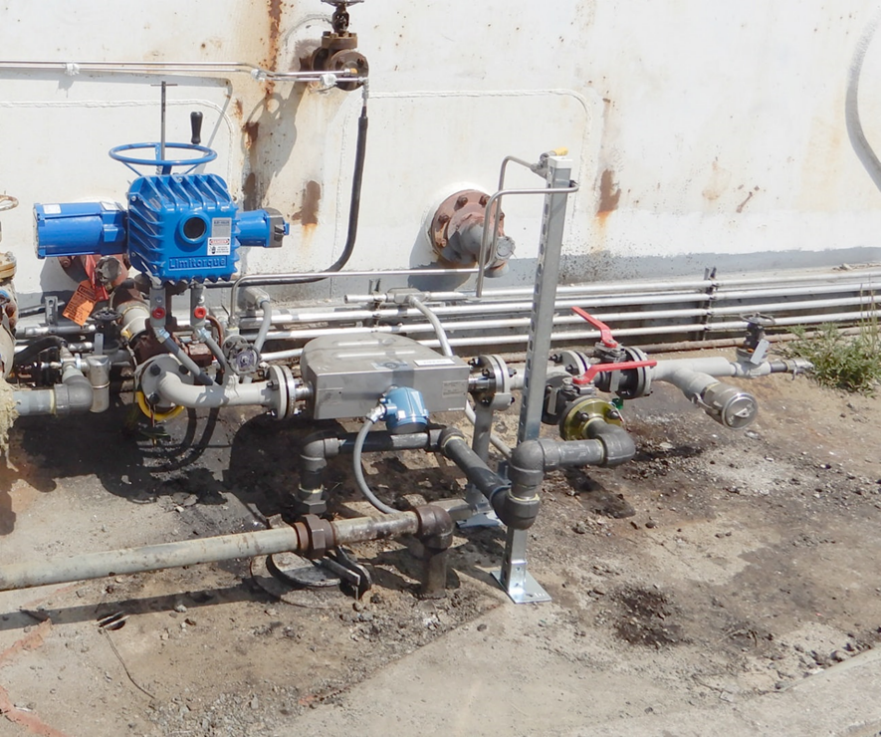Emerson’s Warren Merriman presented Minimizing VOC Emissions During Tank De-Watering at the 2022 4C HSE conference. Here is his presentation abstract:
Over time, water separates and collects in tanks and needs to be removed. Manual or other methods of controlling the water draw-off can result in excessive hydrocarbon product in the discharge to the sewer system. This session will review a unique solution to reduce the amount of Hydrocarbon, including colorless Benzene, released to the Effluent System during Tank De-Watering events. Results have shown reduction of VOC breakthrough measuring less than 1 gallon of hydrocarbon per draw-off event, minimalizing safety concerns of operator exposure, and helps overall plant mass balance data for Yield Accounting.
Warren opened by describing tank dewatering for storage tanks. They hold hydrocarbon feedstocks, intermediates and finished products. Over time, water separates and collects in the tanks.
 This water is drained from these tanks to reduce corrosion and potential process problems. Manual or other methods of controlling the water draw-off can result in excessive hydrocarbon product in the discharge in the sewer system causing a potential process safety risk, increased personnel exposure to volatile organic compounds (VOCs), and mass balance inaccuracies.
This water is drained from these tanks to reduce corrosion and potential process problems. Manual or other methods of controlling the water draw-off can result in excessive hydrocarbon product in the discharge in the sewer system causing a potential process safety risk, increased personnel exposure to volatile organic compounds (VOCs), and mass balance inaccuracies.
Typically, the operations staff manually oversees the de-watering process, closing a manual valve once hydrocarbon withdrawal starts to occur. Some hydrocarbon products such as naphtha resemble water. Problems occur when either too many hydrocarbons are released in the sewer or excess water is left in the oil tanks.
Warren described the solution for automating the tank dewatering process. It included a Micro Motion Coriolis meter, a Micro Motion 2700 multivariable flow and density transmitter, a motor control valve actuator, and a wireless THUM device to transmit the data for inventory analysis.
 The Coriolis meter measures the specific gravity of the water being drained from the bottom of the tank. By monitoring the density of the fluid, the meter can determine when hydrocarbons are entering the water drain and end the dewatering process.
The Coriolis meter measures the specific gravity of the water being drained from the bottom of the tank. By monitoring the density of the fluid, the meter can determine when hydrocarbons are entering the water drain and end the dewatering process.
By automating this process, this refinery removed variations between the process and operations. Less than 1 gallon of hydrocarbons was released per draw-off. This small level eliminated the safety concerns around VOC exposure and greatly improved the performance of the effluent systems.
The solution also improved inventory measurements for the mass balance calculations for the 25 tanks on which the solution was applied and an additional 16 tanks being considered for automation.
Visit the Flow Meters for Mass, Volume & Density Measurement on Emerson.com for more on the technologies to drive safety, efficiency and reliability improvements in dewatering operations.

